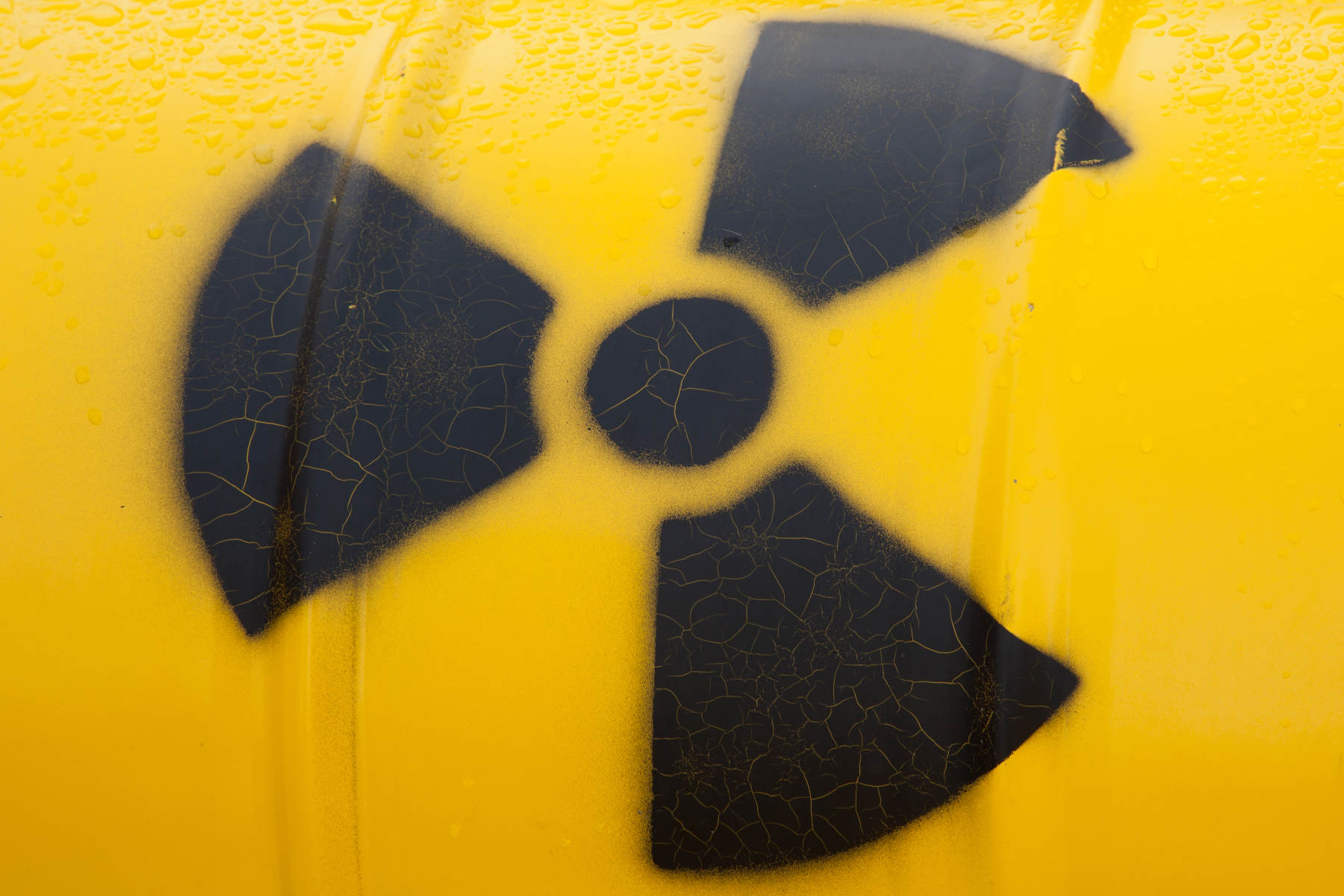I n a landmark decision announced this past November, Canada’s Nuclear Waste Management Organization, or the NWMO, selected the municipality of Ignace in Northwestern Ontario as the site for the country’s first deep geological repository—DGR—for spent nuclear fuel. The repository is to be located within the traditional territory of the Wabigoon Lake Ojibway Nation, forty-three kilometres from Ignace.
The road to this landmark decision, though, has been anything but easy.
Difficult issues in national public policy can run for decades and often have a touch of the absurd about them. Such is the case with climate change. Politicians made earnest pledges to reduce greenhouse gas emissions thirty years ago, and the climate is still waiting. As for the element of absurdity, we are now but a quarter century away from our professed objective of eliminating all fossil fuel emissions, and yet our government budgets still hold massive subsidies for fossil fuel production.
And so it is with the effort to site a DGR for both used nuclear fuel as well as low- and intermediate-level nuclear wastes. Canada has had a good idea about how to do so safely for almost fifty years, and the effort is, as of now, ongoing, but with very little solid assurance that ultimately it will be successful. The recent effort has been made under the rubric of finding a “willing host community”—that is, a municipality (town or city) located somewhere in Ontario—that will, as the phrase implies, “host” a DGR for the most radioactive and long-lasting of the wastes.
For a country such as Canada, which has no military-related nuclear waste, this fuel waste is undoubtedly the most toxic substance its citizens will ever have to deal with. Moreover, there is a lot of it; its toxicity lasts a very, very long time; and there will be much more of it being produced in the future.
A s of the start of 2023, thirty-two countries around the world, among them Canada, were operating some 438 nuclear power plants to generate electricity, all of them producing nuclear wastes of different types. About fifty more reactors were under construction at that time (eighteen of them in China alone), including in three additional countries. The United States, France, and China have the largest number of reactors among all nations, in that order, but China will soon overtake France for second place. In all of the regions in the world, many countries now without nuclear power programs are currently in the process of planning for them.
The first such power plants commenced operations in the mid 1950s, and thus the waste has been accumulating in various temporary storage facilities for seventy years. Only eleven of the countries using nuclear power have active programs in place to choose an acceptable form of long-term storage or disposal of the resulting high-level waste. One of them, Finland, has construction underway, in Onkalo. Four countries—France, Russia, Sweden, and Switzerland—have selected a site. And six—Canada, China, the Czech Republic, Germany, Japan, and the United Kingdom—have proposals for site selection at various stages of development. In these cases, the expected commissioning date for a disposal site ranges from 2030 to 2065.
Radium mining began in Canada’s Northwest Territories in the 1930s, with refining done at Port Hope, Ontario. Uranium exploration was taking place by the 1940s, and the federal government operated a heavy water plant in Trail, British Columbia, which contributed to the US atom bomb project. Canada’s role in the nuclear research club began during the Second World War, when, in 1942, Britain sent a group of nuclear scientists to a research facility in Montreal. In 1945, the research group eventually succeeded in building, at a dedicated site in Chalk River, Ontario, the first operating nuclear reactor outside the US—which was known as ZEEP, or zero energy experimental pile.
Based on this wartime success, the Government of Canada then established a Crown corporation, Atomic Energy of Canada, Limited—AECL—in 1952. AECL designed the CANDU, or the Canadian deuterium uranium, reactor, which is operating in Canada as well as in Argentina, China, Pakistan, Romania, and South Korea. In Canada, the first demonstration reactor began supplying electricity to a grid in 1962, and the first commercial-scale plant, at Pickering, commenced operations in 1971. Canada currently has nineteen operating nuclear reactors, located in just two of its provinces: one in New Brunswick and the rest in Ontario, which has two more that are undergoing refurbishment to extend their useful lives. (One plant, at Gentilly in Quebec, was shut down in 2012 but may now be reopened.) Together, they supply 15 percent of Canada’s total electricity output, but in Ontario, nuclear’s share is 50 percent.
The CANDU reactor used in all Canadian installations is a pressurized heavy-water type that uses natural (unenriched) uranium as an energy source. The fresh fuel, composed of 99.28 percent U-238 and 0.72 percent U-235, is formulated into a bundle made up of zirconium rods filled with small uranium pellets: the ceramic pellets are placed inside a tube made of a zirconium-tin alloy, with the completed assembly called a fuel element or fuel pencil. These fuel pencils are welded together into bundles in the shape and size of a fireplace log. Each CANDU fuel bundle is about 0.5 metres long, has a diameter of about 0.1 metres, contains about twenty kilograms of uranium, and has a total mass of about twenty-four kilograms.
When the bundle is removed from the reactor at the end of its useful life (a period of twelve to eighteen months), the composition of the used fuel waste is almost 99 percent U-238, together with very small amounts of other isotopes of uranium and plutonium. Most of the energy in the uranium is still unused, but the rod itself has become unstable due to neutron bombardment. Upon removal from the reactor, the used fuel bundle is both highly radioactive and very hot; it is placed in a pool underwater, and after one year, both heat and radioactivity decrease to 1 percent or less of their initial values. After 100 years, the radioactivity will have decreased to 0.01 percent of its initial level, and after about 1 million years, it will approach that of natural uranium. After ten years, the fuel bundles are removed from the pool and transferred to reinforced concrete casks on the plant site. As of the end of 2019, Canada had accumulated in temporary storage a little over 3 million used fuel bundles, representing about 13,000 cubic metres in volume, the equivalent of about five Olympic-size pools. The volume of waste will increase substantially before a DGR is actually open and receiving material.
B y 2010, the NWMO had developed a set of guiding principles for the process of selecting a site for the construction of a deep geological repository, summarized in a document entitled “Moving Forward Together: Process for Selecting a Site for Canada’s Deep Geological Repository for Used Nuclear Fuel.” The basic principle was clear: “The host community, the local geographic community in which the facility is to be located, must be informed and willing to accept the project.”
The duration and complexity of the DGR project mean that any community prepared to agree with the NWMO to host the project would be in the game for the long haul, perhaps more than 100 years. Between 2010 and 2012, a total of twenty-two communities responded to the NWMO with an initial expression of interest in the idea of becoming a willing host for the facility. All but three of them are located in Ontario, which makes eminently good sense since it is there that by far the largest share of high-level nuclear fuel waste has been generated and is now located and temporarily stored.
Eventually, only two candidates out of the original set of twenty-two were still standing—namely, Ignace and South Bruce. The township of Ignace is located on the Trans-Canada Highway, about 250 kilometres northwest of Thunder Bay, about 200 kilometres east of Kenora, and about 100 kilometres southeast of Dryden. It had expressed its interest as early as 2009, and by November 2013, the NWMO completed its phase-one preliminary assessments there.
By 2017, the identification of suitable geological formations in the Ignace area proceeded to the point of doing borehole drilling and testing in the most favourable location, a rock formation known as the Revell Batholith, located about forty-three kilometres west of Ignace and between Ignace and the settlement of the Wabigoon Lake Ojibway Nation. In 2022, an elaborate suite of community studies on various aspects of the project’s potential impacts on the people of Ignace was planned and carried out. The transportation analysis for the shipment of waste from the seven temporary storage locations to the Ignace area was also completed: road transport is available over the Trans-Canada Highway, and rail transport is possible since Ignace sits on the Canadian Pacific Railway main east–west line and is also a relatively short distance south of the Canadian National Railway main line.
The Wabigoon Lake Ojibway Nation—WLON—or Wabigoon First Nation, based in the Kenora district southeast of Dryden and a member of Grand Council Treaty 3, is the First Nation partner for the NWMO in the Ignace area. Treaty 3 encompasses 55,000 square miles and stretches from eastern Manitoba to just west of Thunder Bay; it includes twenty-eight communities of Anishinaabe peoples, located in Northwestern Ontario and southeastern Manitoba, with a total population of about 25,000. The WLON is a Saulteaux First Nation band and, as of 2021, had a registered population of 822, with an on-reserve population of 186 residing at Wabigoon Lake 27 Indian Reserve who operate a wild rice processing plant, a logging business, and a tree nursery there. The consultations over the possible DGR siting in the Ignace area led to some quite acrimonious public controversy among a number of First Nations communities, many of which are very close to each other in an area at the southernmost corner of the extreme northwestern edge of Ontario, near both the Manitoba and US borders.
The South Bruce proposed site is a very different story, and not just because it is a full 1,650 kilometres southeast of Ignace. The community of South Bruce is less than 200 kilometres from Toronto and less than 100 kilometres from the major population centres of Guelph, Waterloo, and Kitchener (and not much further from Hamilton). It is also less than forty kilometres southeast of Kincardine, home of the Bruce Nuclear Generating Station, where an earlier DGR project for low- and intermediate-level nuclear waste was rejected only a few years ago after two decades of study. The geological formation for a DGR sited there would be in sedimentary rock rather than in the crystalline rock of granite. The First Nation partner in the project is the Saugeen Ojibway Nation, or SON, the party that turned down that earlier DGR project in this same area. SON is also currently litigating Crown Treaty 72, signed in 1854, in an effort to properly define its traditional territory.
It is hard to understand why the Bruce site was one of the final two still being considered by the NWMO. One set of negatives is its proximity to the dense population core of southwestern Ontario, which becomes ever denser with each passing decade, as well as the fact that very large quantities of high-level waste would have to be moved by road throughout this area on their way to any South Bruce DGR site—continuously, over a period of half a century or more. The other potential negatives have to do with the rock formation, since South Bruce is an area of sedimentary rock. In fact, the negatives of the South Bruce site were so pronounced that one wondered if it was being kept alive solely as a negotiating card so that Ignace did not regard itself as the only viable option. It had all the markings of an elaborate charade.
C anada’s ambitious plans for building and installing many new nuclear power plants of various kinds, as well as its urgent need to safely dispose of nuclear wastes over very long time frames, have one critical factor in common: an appropriate site somewhere on and below the ground must be found for every one of these facilities. Operating each of them involves handling extremely hazardous radioactive materials that have the capacity to seriously harm human health and to contaminate the surrounding environment. Fortunately, this country already has in place all of the laws and regulations it needs that, if correctly applied, will offer adequate protection for both human health and the environment while those facilities are operational.
Canada must have an extensive supply of new nuclear power plants or else it will simply be unable to meet its climate change target of reducing and eliminating its greenhouse gas emissions. It must also construct and operate a deep geological repository for high- and intermediate-level nuclear wastes, as Finland and Sweden are now doing, since the received consensus of many nations is that this is the only safe method of confining those wastes where they cannot do harm to humans and the environment over the very long term.
The NWMO requires of any prospective host community in Canada that it be a willing applicant for consideration for this role. But it is not surprising that a fair number of applicants had initially come forward. After all, the waste site itself is never going to be emplaced within anyone’s municipal boundaries and is in fact likely to be located at a considerable distance from them. But there will be new offices and other facilities in the town or city as well as a cohort of new, well-paid residents with long-term jobs. The NWMO has deployed studies designed to assess the social and economic impacts of these new developments on local employment, housing stock, municipal resources and services, recreational opportunities, traffic, tourism, and quality-of-life considerations. It is not hard to imagine that, for a host municipality, the benefits of all kinds will outweigh any risks by a substantial margin.
The DGR project now involves the following steps and approximate timeline:
2024: The NWMO and the chosen community enter into and ratify a formal agreement.
2025–2033: The Canadian Nuclear Safety Commission and the Impact Assessment Agency of Canada undertake joint environmental assessment and licensing hearings; thereafter, site characterization, issuance of a construction licence, and facility design follow.
2033–2040: Construction of the underground DGR and associated surface facilities, such as a waste repackaging plant.
2040–2045: Operations begin—reception and repackaging of the wastes upon arrival from temporary storage facilities and emplacement below ground.
Post 2045: Maintaining a dedicated facility, known as a centre of expertise, with expert personnel to oversee every aspect of the project.
Post 2045: Fifty years or more of receiving, repackaging, and emplacing nuclear wastes below ground, plus environmental monitoring.
Eventually, long into the future: The decommissioning and final closure of the site.
Adapted and excerpted from Deep Disposal: A Documentary Account of Burying Nuclear Waste in Canada by William Leiss, published by McGill-Queen’s University Press, 2024. Reproduced with permission from the publisher.





